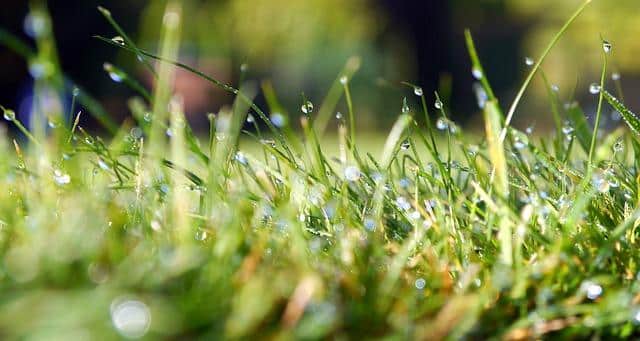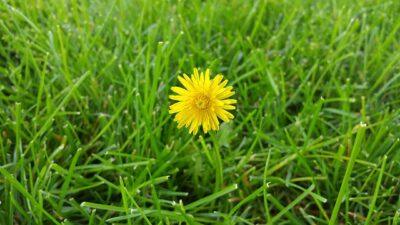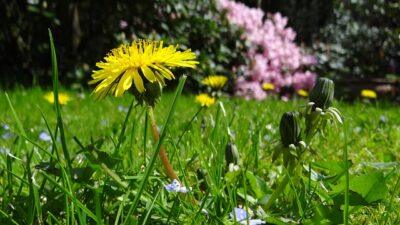Translated from the French name “dent de lion,” which describes its coarsely toothed leaves, dandelions are hardy survivors, and were a staple in the diets of Native Americans, pioneers and most all of our ancestors.
It seems like no matter how much humans strive to kill them off and spray a plethora of chemicals on them, they still come back. Although their survivability can be quite frustrating for those striving for a picture-perfect lawn, the humble dandelion can play an important role in ecological health and in supporting our own health, as well.
While there are many varieties of dandelions, the most common is the Taraxacum officionale. Originating from Eurasia, dandelions are now naturalized in the U.S. throughout all 50 states, as well as in parts of Canada and Mexico. The seeds of a dandelion can travel up to five miles from the original plant.
Health Benefits of Dandelions
Humans have been using dandelions for both food and medicine for thousands of years, for a variety of ailments. The entire dandelion plant, from the bright yellow-colored blooms, to the leafy greens, to the roots, is edible and is useful for both food and medicine.
Learn How You Can Make Powerful Herbal Medicines, Right in Your Kitchen!
Dandelions contain many valuable nutrients, such as Vitamin D, beta-carotene, fiber, potassium, iron, calcium, magnesium, zinc, phosphorous, B complex vitamins, trace minerals, antioxidants and organic sodium. They also contain more protein than spinach. The health benefits of dandelions include the treatment of a variety of conditions.
Environmental Benefits of Dandelions
Dandelions can help to clean up contaminated soils by taking up and concentrating toxic chemicals in their plant parts. (Obviously, you don’t want to eat dandelions from that soil.)
Dandelions attract ladybugs, helping to keep aphids in check in our yards and gardens.
Beet Powder: The Ancient Secret To Renewed Energy And Stamina
The deep taproots of dandelions aerate the soil and take up minerals that are returned to the soil when the plant dies. These deep roots also help to prevent soil erosion, by holding the soil in place. Dandelions even provide an important source of nutrients for grizzly bears, deer and elk.
Dandelions are an important first emerging pollen source in the spring for pollinators in the United States. This is critical, since our pollinator populations across the US are in steep decline, due to a number of issues such as critical habitat loss and heavy pesticide use in agriculture that kills important pollinators, including honeybees and monarch butterflies.
Using Dandelions
Bitter greens like dandelion greens are great liver-supporting foods that can be added in limited quantities to smoothies, as well as sautéed.
Dandelions can easily be grown in garden planters or pots. The seeds can either be purchased or gathered from any of the dandelion puffball seed heads in your community during the summer. If you do not wish to grow or gather your own, fresh dandelion greens can often be found at health food stores or as a freeze-dried herb. Dandelion tea, capsules and tinctures are also commercially available.
New ‘Survival Herb Bank’ Gives You Access to God’s Amazing Medicine Chest
They are a great addition to any cleansing program. Because of their ability to support the body’s detoxification systems, dandelions are a great herb to consume in the spring when our bodies are going through a “spring cleaning” on their own.
Dandelions can be used in recipes to produce culinary creations, such as dandelion wine and dandelion jelly. Refer to individual recipes for which parts of the plant to use when preparing these foods. Dandelion roots can be roasted and used as a coffee substitute without the jittery effects of caffeine.
Dandelions also can be infused in apple cider vinegar and used as a salad dressing during a cleansing program.
Tips on Harvesting Dandelions
When harvesting dandelions, be sure to avoid gathering them near roadsides, where landscapes have been sprayed with lawn or agricultural chemicals. Meadows and abandoned lots – or your yard — are great places to harvest dandelions.
To reduce the bitterness of the greens, harvest them in the spring or in the fall. Young leaves are generally the least bitter tasting and can be added to raw salads. Cooking reduces the bitterness of the leaves and the roots.
To harvest the entire plant, dig them up from the roots.
How do you eat or use dandelions? Share your ideas in the section below:
This article is for informational purposes only and is not intended to diagnose or cure any particular health condition. Please consult with a qualified health professional to determine which treatments are right for you and any individual health condition(s) that you may have.
Harness The Power Of Nature’s Most Remarkable Healer: Vinegar
 Off The Grid News Better Ideas For Off The Grid Living
Off The Grid News Better Ideas For Off The Grid Living







